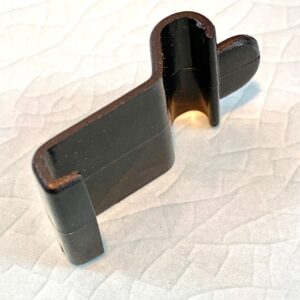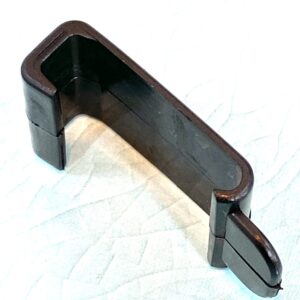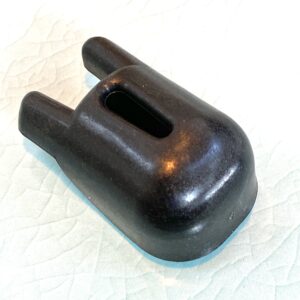SafaMesh 25 Nominal hole size 25mm x 25mm
£4.19 Inc VATMolecular aligned Polypropylene mesh. Providing an excellent strength to weight ratio. Nominal hole size 25mm x 25mm. Colour Black. 2 metres wide.

Molecular aligned Polypropylene mesh. Providing an excellent strength to weight ratio. Nominal hole size 25mm x 25mm. Colour Black. 2 metres wide.

Molecular aligned Polypropylene mesh. Providing an excellent strength to weight ratio. Nominal hole size 6mm x 7mm Colour Black. 2 metres wide.

SafaMesh cable tie to secure the SafaMesh to the SafaDeck. Length 100mm. Pack of 100.

The beam clip is used to clip the grid to the beam. Normally one beam clip is located in each corner of the grid, meaning on average 4 beam clips are required for each grid. Beam clips are also placed over any join in the beams.

The cut end bumper is used to protect butyl and PVC liners from any cut sections of grid. It has a smooth curved side and an open side. The open side has a wider base and a narrower top. It is used in an upside-down position when placing over the diagonal cut sections of grid….

The cut end support is used in the rare event when a section of grid cannot be adequately supported by beams on either side. It is placed over a section of grid and a length of support cord is passed through the bottom two holes which is then anchored outside the pond using either a…

The floating beam clip is used to attach grids to the first and last beams in the pond. It can be used over the ‘star’ configuration in the grid. It is also used to attach any additional support beams to the underside of the grid if required. It is clipped into position using a flat…

The grid to grid clip brings together one grid in a lane with its neighbouring grid. They work in pairs and are clipped in between the tabs on the underside of the grid. One grid to grid clip is placed in one direction, the other in the pair in the other direction. When combined in…

The beam cleat is used to cap off the end of the support beam. After the beam is cut to length, without the beam cleat it would pose a threat to the pond liner. The beam cleat has a central hole, through which the support cord is passed.

The joiner helps position one beam into the next. It is not a load-bearing component. Load is taken by the support leg positioned at the join. The support cord passes through the joiner as shown.

The grid, made from 30% glass-filled nylon, measures 49cm wide and 59cm long and is 3cm deep. Holes are triangular 14cm x 14cm x 16cm. Beams run underneath the two longest edges and so are spaced 49cm apart. Grids running between two beams form one ‘lane’ of grids.

The grid, made from 30% glass-filled nylon, measures 49cm wide and 59cm long and is 3cm deep. Holes are triangular 14cm x 14cm x 16cm. Beams run underneath the two longest edges and so are spaced 49cm apart. Grids running between two beams form one ‘lane’ of grids.

Used to support grids in place. Can be cut to the desired length or extended by use of the beam joiner. Note that the recess in the top of the beam is designed to take the longest edges of each grid or the tabs on the underside of the outermost grids.

Used to support grids in place. Can be cut to the desired length or extended by use of the beam joiner. Note that the recess in the top of the beam is designed to take the longest edges of each grid or the tabs on the underside of the outermost grids.

Used to support grids in place. Can be cut to the desired length or extended by use of the beam joiner. Note that the recess in the top of the beam is designed to take the longest edges of each grid or the tabs on the underside of the outermost grids.

Used to support grids in place. Can be cut to the desired length or extended by use of the beam joiner. Note that the recess in the top of the beam is designed to take the longest edges of each grid or the tabs on the underside of the outermost grids.
No products in the basket.